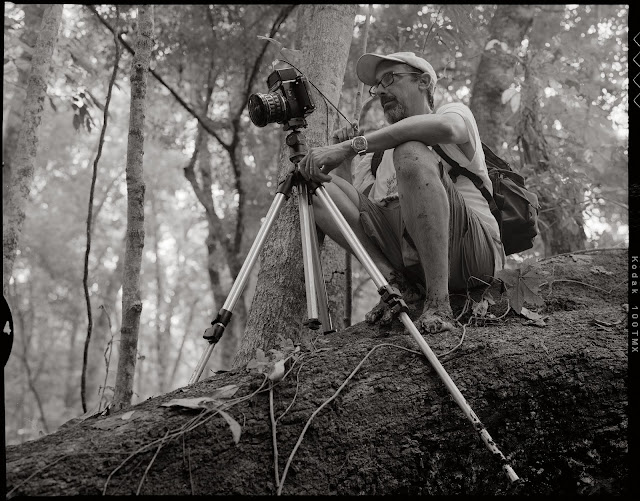This trip with Dominick was a lot of fun. The "Dead River" may or may not be the official name of this place - it's an offshoot of the Alapaha River. If you Google search Dead River Florida you'll find a different place.
It's a very interesting place with lots of hills and limestone. The river runs to a dead-end where there is a siphon that sucks the water underground - definitely don't want to be swimming here!
There's even a Horseshoe Bend -esque 180 degree turn in the river that I need to photograph.
Anyway, here's a variety of images from the trip - mostly taken with my 58mm XL. B&W film is T-Max 100 developed in FX-39, 1:14, and color film is Velvia 50:
At the end of the river there was a swirling eddy near the bank that I took several images of. Here's a few of them, I haven't decided which I like best. First is one with Dominick posing further along the bank:
Here's a horizontal version:
And some color versions:
I'm looking forward to exploring more of this place. I also have some video from this trip I still need to edit - I will post that soon.





























































